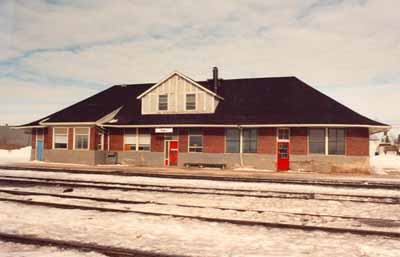Canadian National Railways Station
Heritage Railway Station of Canada
Rivers, Manitoba

Exterior photo
(© Murray Peterson, Parks/Parcs Canada, 1992.)
Address :
At Hwy. 250 & Hwy. 25, Rivers, Manitoba
Recognition Statute:
Heritage Railway Stations Protection Act (R.S.C., 1985, c. 52 (4th Supp.))
Designation Date:
1992-06-04
Dates:
-
1917 to 1917
(Construction)
Research Report Number:
RS-114
Description of Historic Place
The Canadian National Railways Station at Rivers is a one-and-a-half-storey railway station built in 1917. It is prominently located at the southern extremity of the town of Rivers. The formal recognition is confined to the railway station building itself.
Heritage Value
The Canadian National Railways (CNR) Station at Rivers reflects the role of the Grand Trunk Pacific Railway (GTPR) in determining the economic growth of the town. The station served as the focal point of the community, as well as the economic engine as the nucleus of its extensive repair and staff facilities.
The Rivers railway station retains its visual prominence within the town, and its relationship with the remaining railway tracks and bunkhouses in the rail yard.
Sources: Heritage Character Statement, Canadian National Railways Station, Rivers, Manitoba, October 1992 and Murray Peterson, Railway Station Report 114, Canadian National Railways Station, Rivers, Manitoba.
Character-Defining Elements
Character-defining elements of the Canadian National Railways Station at Rivers include: its low, horizontal massing, accentuated by the banding of cement and brick on exterior walls its simple rectangular plan, interrupted only by the operator’s bay on the track elevation its roof line, consisting of a broad, slightly bellcast hip roof, enlivened by gable dormers on both track and town elevations its exterior materials, including: a cement foundation rising to the lower window sill level; red brick walls above the foundation; and half-timber and stucco treatment on the second-storey gables surviving original interior layout and finishes on the second floor, including trim and mouldings